
In a previous post we explored the controversy that surrounded the consumption of coffee, did it dry and shrivel up male virility or did it augment and strengthen sexual prowess? Coffee was not, though, the only drink discussed and described in early modern England. In the mid-seventeenth century chocolate was a novelty being consumed by the wealthy at home, and by those of more modest means in chocolate houses that had sprung up in London in the 1660s.
Kate Loveman has shown that chocolate houses developed a reputation for frivolity, gambling and lasciviousness.1 It was widely believed that chocolate acted as an aphrodisiac and fertility aid. Indeed John Chamberlyne explained in his treatise on the popular drinks of the day that
The great use of Chocolate in Venery, and for supplying the Testicles with a Balsam, or a Sap, is so ingeniously made out by one of our Learned Countrymen already, that I dare not presume to add any thing after so accomplisht a Pen; though I am of the opinion, that I might treat of the Subject without any immodesty, or offence.2
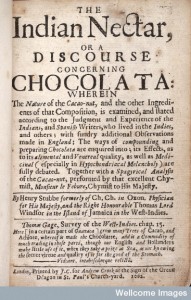
Credit: Wellcome Library, London.
Chamberlyne explained that the titillating powers of chocolate were so strong and reliable that if men in other nations and eras had only known about it they would have rejected their own aphrodisiacs in favour of this. He concluded ‘ I do not doubt, but you London Gentlemen, do value it above all you Cullises and Jellies, your Ancoves, Bononia Sawsages, your Cock, or Lamb-stones, your Soys, your Ketchups, and Caveares, your Cantharides, and your Whites of Eggs’.2
Another pamphlet described the effects chocolate had on libido through a dialogue between two milk maids, demonstrating that it was thought to stimulate both men and women. The first maid, Cis, expressed concern that a man who frequently drank ‘that Hell-burnt Liquor’ coffee would be deprived of his sexual vigour.
Peg, the second maid, answered that her own man was wise because he did not drink coffee but ‘drinks Chocolate, which is a rich drink indeed; `twil make him as strong in the back as a Lion; he’s as nimble as a Squirril, as brisk as a body-Lowse, and as lively as an Eel, only by the virtue of that Liquor’.4 Peg went on to blame chocolate for her own sexual escapades including the loss of her virginity and the birth of her child.
But chocolate, like many medicinal substances at this time, multifunctional and beneficial for a range of medical ills. A pamphlet advertising the sale of chocolate by James Gough at M. Surry’s near East-gate claimed that it helped problems such as halitosis and strangury (painful urination) as well as causing conception
By this pleasing drink health is preserved, sickness diverted, It cures Consumption and Cough of the Lungs; it expels poison, cleanest the teeth, and sweetneth the Breath; it provokes Urine; cureth the stone and strangury, maketh Fatt and Corpulent, faire and amenable, it cureth the running of the Reins, with sundry other desperate Diseases; it causeth Conception’
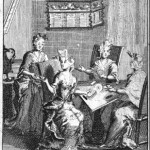
Credit: Wellcome Library, London.
This author was obviously trying to sell his product and was thus inclined to make lurid claims about his wares. He was keen to encourage loyalty in his customers arguing that ‘it is impossible to enumerate all new and admirable effects then producing every day in such as drink it, therefore I’le leave the Judgement of it, to those who daily make a continuall proofe of it.’5
The variety of diseases chocolate treated was perhaps a result of the contention that existed about the fundamental properties of chocolate. Some thought it was cooling and emollient, but it was usually made up with sugar, chilli, pepper, nutmeg or cinnamon which were heating and astringent.
Early modern men and women were aware that the consumption of chocolate could have unwanted side effects. Particularly that drinking chocolate too often would make you ‘fat’. Chamberlayne’s recounted that,
English Seamen are very greedy of it when they come into any Indian Port, and soon get plump countenances by the use of it.
Likewise he recalled that Mr Gage had drunk ‘Chocolate in the Indies two or three times every day for twelve years together, and he scarce knew what any Disease was in all that time, he growing very fat’.6 The mantra ‘a moment on the lips a lifetime on the hips’ was not spouted by those wishing to avoid the pitfalls of tasty treats, but they were certainly aware that life’s little luxuries could have lasting consequences.
_____________________
1. Kate Loveman, ‘The Introduction of Chocolate into England: Retailers, Researchers, and Consumers, 1640-1730’, Journal of Social History vol. 47, no. 1 (2013), p. 27-46.
2. John Chamberlyne, The Natural History of coffee, thee, chocolate, tobacco … (London, 1682), p.18.
3. Ibid.
4. Bollicosgo Armuthaz,The Coffee-mans granado (London, 1663).
5. Anon., The virtues of chocolate East-India drink (London, 1660).
6. John Chamberlyne, The Natural History of coffee, thee, chocolate, tobacco … (London, 1682), p. 17.
© Copyright Jennifer Evans, all rights reserved
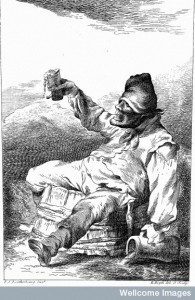
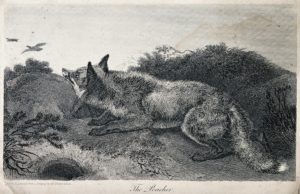
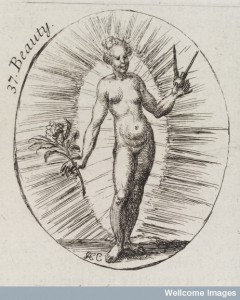
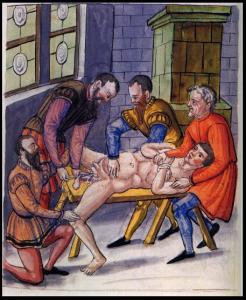
Fascinating blog, thanks – we have just reissued Richard Cadbury’s patchy but entertaining history of the family stock-in-trade: see http://bit.ly/1wSdXB3